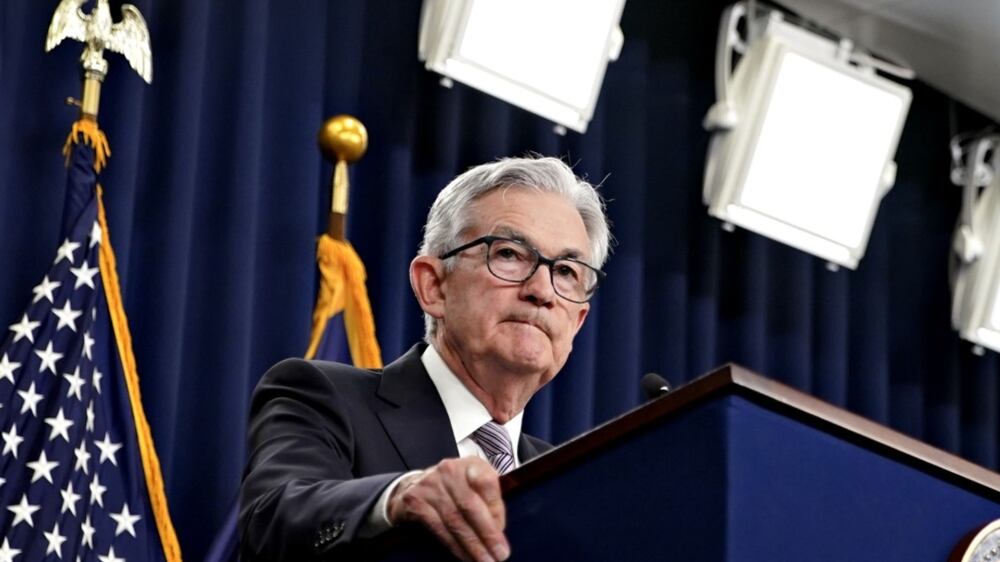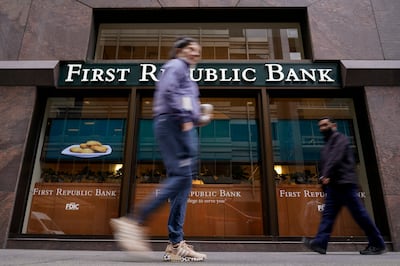Developed market central banks pushed ahead with rate increases last week, despite the increasing pressure on regional US lenders.
Both the US Federal Reserve and the European Central Bank pointed to still high inflation and tight labour markets as justification for further monetary policy tightening, raising rates by 25 basis points to 5.25 per cent and 3.25 per cent, respectively.
The Federal Open Market Committee signalled a pause in its post-meeting statement, although chairman Jerome Powell indicated that rates could rise further if economic data signalled that additional tightening was warranted.
Meanwhile, the ECB indicated that more rate increases are likely in the coming months.
US Federal Reserve raises interest rates for tenth consecutive time

The market is pricing two more 25 basis point increases from the ECB this year to 3.75 per cent, but believes that US rates have peaked.
Indeed, Fed funds futures are pricing in three 25 basis point cuts before the end of the year.
The reason for the market’s dovish rate outlook is the increasing pressure on mid-sized US banks over the past couple of weeks, amid fears that it will spread and contribute to significant tightening in financial conditions - and push the US economy into a steep recession.
Concerns about a potential US debt default if Congress doesn’t agree to raise the debt ceiling may also be contributing to the gloomy outlook.
US banks have come under renewed pressure over the past week, leading to the acquisition of First Republic Bank by JP Morgan in a deal arranged by regulators.
The S&P regional banks index has declined about 10 per cent in May and is down 38 per cent since the beginning of March, as investors fret over the impact of rising interest rates on smaller banks’ balance sheets.
Small and medium-sized banks account for about 40 per cent of all lending in the US. While larger companies can access equity and debt capital markets to raise financing, smaller businesses rely on bank lending to fund expansion and working capital requirements.
Regional banks also play a key role in real estate lending in the US, accounting for almost 70 per cent of commercial real estate loans.
When these regional banks struggle to raise liquidity and are faced with losses on their portfolios, they are likely to cut back on lending to customers and also raise the cost of the loans they do make.

This has a direct impact on the cost and availability of loans to a large chunk of the consumer, corporate and real estate sectors, reducing demand and weighing on consumer spending and private sector investment.
This additional tightening in credit conditions is over and above what was caused by the Fed’s rate increases and is difficult to measure. Some analysts have indicated that the tightening of bank lending standards may be equivalent to as many as two or three 25 basis point rate raises.
Against this uncertainty, it is unsurprising that the Fed has now shifted to a more wait-and-see approach before deciding on its next move.
If a sharp contraction in the availability of credit leads to more widespread job losses and a faster decline in US inflation, then the Fed may be able to ease monetary policy sooner rather than later.
However, the data doesn’t suggest this is the most likely outcome.
While US economic growth has slowed in the first quarter of this year and headline inflation has eased, core inflation remained uncomfortably high at 5.6 per cent annually in March.
Moreover, the labour market remains very tight and wage growth is still well above what the Fed would be comfortable with. Job growth in April was faster than expected, the unemployment rate fell back to 3.4 per cent and average hourly earnings growth accelerated to 4.4 per cent year on year.
For now, at least, we think the more likely scenario is one where the Fed keeps rates on hold for an extended period, rather than easing monetary policy too quickly and risking a resurgence in price pressures.
There are other tools that the central bank and regulators can use to support the smaller banks facing stress and rate cuts are unlikely to be deployed unless the problems become more widespread and systemic.
Khatija Haque is chief economist and head of research at Emirates NBD






